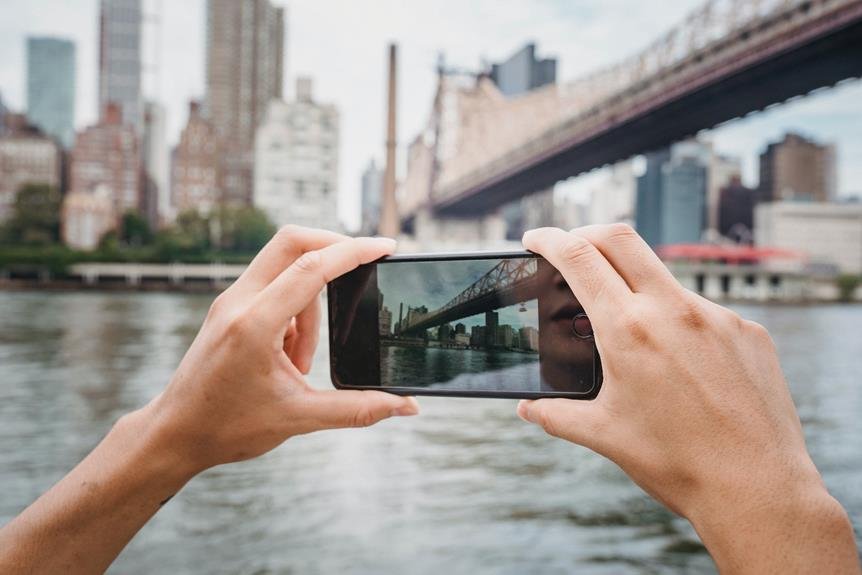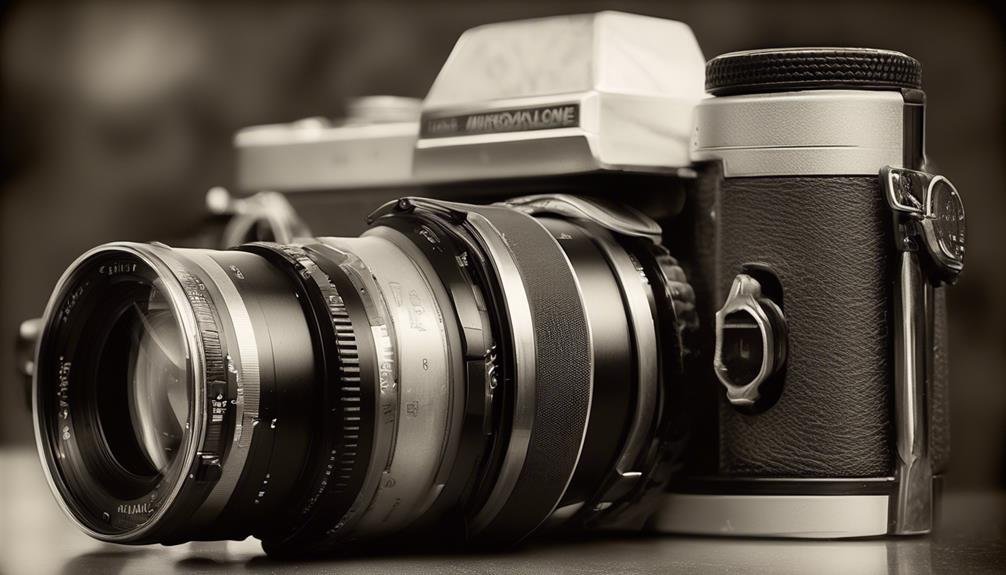
When it comes to capturing our travels, choosing the right camera can be crucial. Mirrorless camera bodies have been making waves in the photography world, offering a lightweight and versatile option for capturing those unforgettable moments on the go. But are they truly the best choice for travel? As we explore the features, advantages, and best options for mirrorless camera bodies, we'll unearth the reasons why these compact companions might just be the perfect travel sidekick for any photography enthusiast.
Advantages of Mirrorless Camera Bodies for Travel
When traveling, mirrorless camera bodies offer the advantage of being lightweight and compact, making them ideal for capturing high-quality images without the bulk of traditional DSLR cameras. The smaller size of mirrorless cameras allows for easier portability, making them perfect for travel photography. Despite their compactness, mirrorless cameras don't compromise on image quality. With advancements in technology, these cameras now produce images that rival those from DSLRs. Additionally, their autofocus capabilities are top-notch, ensuring that you can capture sharp, in-focus shots, especially useful for capturing fast-moving subjects while on the go.
Another advantage of mirrorless camera bodies for travel is their impressive battery life. Many mirrorless models boast long-lasting batteries that can endure a full day of shooting without needing a recharge. This is particularly beneficial when traveling to remote locations where access to power sources may be limited. The extended battery life provides the freedom to explore and capture stunning images without the worry of running out of power. Overall, mirrorless camera bodies are a game-changer for travel photography, offering exceptional image quality, compact size, advanced autofocus, and impressive battery life.
Key Features to Look for in Lightweight Camera Bodies
Lightweight camera bodies are essential for travel photography, and when considering these, it's crucial to prioritize key features that contribute to portability and performance.
- Compact and Durable Build: Look for lightweight designs that are also robust enough to withstand the rigors of travel. A magnesium alloy construction can provide durability without adding excessive weight.
- Advanced Sensor Technology: Seek camera bodies with advanced sensor technology for high-quality images in a lightweight package. Features such as back-illuminated sensors and high megapixel counts can enhance image quality without compromising portability.
- Innovative Image Stabilization: Opt for camera bodies with advanced in-body image stabilization (IBIS) technology. This feature allows for sharper images, especially in low-light conditions, without the need for bulky external stabilizing equipment.
- Wireless Connectivity: Choose camera bodies that offer seamless integration with smart devices. This allows for easy and quick sharing of travel photos, as well as remote control capabilities, enhancing the overall travel photography experience.
Lens Compatibility and Versatility in Mirrorless Photography

Lens compatibility and versatility greatly impact the creative potential and adaptability of mirrorless photography systems. When choosing a mirrorless camera, it's crucial to consider the range of lenses available and their compatibility with the camera body. The ability to use a variety of lenses opens up endless possibilities for capturing different perspectives, styles, and subjects. Additionally, for travel enthusiasts, having versatile lenses can reduce the need to carry multiple heavy lenses, making it easier to pack and carry travel accessories.
| Lens Type | Compatibility |
|---|---|
| Prime Lenses | Compatible with most mirrorless camera bodies |
| Zoom Lenses | Varying compatibility, check with specific camera model |
| Wide-angle Lenses | Compatible with most mirrorless camera bodies |
Prime lenses, known for their sharpness and low-light performance, are generally compatible with most mirrorless camera bodies, offering a wide range of focal lengths. Zoom lenses, on the other hand, may have varying compatibility, so it's essential to check compatibility with specific camera models. Wide-angle lenses, ideal for capturing landscapes and architecture, are also commonly compatible with most mirrorless camera bodies, providing flexibility for travel photography. The versatility of lens options enhances the creative potential and practicality of mirrorless photography, making it an ideal choice for travel enthusiasts.
Ergonomic Design and Portability for On-the-Go Photography
The ergonomic design and portability of mirrorless camera bodies are essential factors to consider for on-the-go photography, providing comfort and ease of use while capturing moments during travel. When considering the ergonomic comfort of a mirrorless camera, it's important to look for features such as a well-designed grip that fits comfortably in hand, intuitive button placement for easy access, and a lightweight body that reduces strain during extended use. Additionally, the compact size of mirrorless camera bodies allows for easy transportation, fitting into small bags or even pockets, making them ideal for travel photography. The ability to carry a mirrorless camera effortlessly means that photographers can be ready to capture fleeting moments without being weighed down by bulky equipment. Furthermore, the compact size and ergonomic design of mirrorless camera bodies make them discreet, allowing photographers to blend into their surroundings and capture authentic moments without drawing excessive attention. These features collectively enhance the overall experience of on-the-go photography, making mirrorless camera bodies an innovative and practical choice for travel enthusiasts.
Best Mirrorless Camera Bodies for Travel Photography

When selecting mirrorless camera bodies for travel photography, our primary focus is to prioritize compactness and versatility without compromising on image quality. One of the key factors to consider is the mirrorless camera sensor size. Opting for a camera with a larger sensor, such as a full-frame or APS-C, can significantly enhance image quality, especially in low light conditions. These sensors allow for better light gathering capability, resulting in improved low light performance and overall image quality. Additionally, a larger sensor provides more control over depth of field, allowing for stunning bokeh effects and creative flexibility in various shooting environments.
In terms of low light performance, mirrorless cameras with advanced noise reduction technology and impressive ISO capabilities are particularly advantageous for travel photography. When capturing moments in dimly lit settings or during nighttime adventures, a camera that excels in low light conditions can make all the difference in producing sharp, high-quality images without excessive noise.
Considering these aspects, mirrorless camera bodies with larger sensor sizes and exceptional low light performance, such as the Sony Alpha series or Fujifilm X-T4, are excellent choices for travel photographers seeking top-tier image quality in diverse lighting conditions.
Frequently Asked Questions
Are There Any Specific Weather-Sealing Features to Look for in Mirrorless Camera Bodies for Travel Photography?
When selecting mirrorless camera bodies for travel photography, we prioritize weather-sealing features to protect against the elements. This ensures durability and reliability, crucial for capturing stunning shots in diverse environments during our travels.
How Does the Battery Life of Mirrorless Camera Bodies Compare to Traditional DSLR Cameras for Travel Purposes?
Battery life in mirrorless camera bodies is comparable to traditional DSLR cameras for travel photography. We find that mirrorless cameras offer improved portability and efficiency, making them a great choice for on-the-go shooting.
Are There Any Specific Accessories or Add-Ons That Are Recommended for Mirrorless Camera Bodies for Travel Photography?
When it comes to lens options and stabilizers for mirrorless camera bodies, we recommend versatile prime lenses and compact gimbals. Additionally, high-speed memory cards and quality filters are essential for capturing stunning travel photography.
What Are Some Common Challenges or Limitations That Travelers May Encounter When Using Mirrorless Camera Bodies for Photography on the Go?
Challenges of using mirrorless camera bodies for travel photography include battery life, limited lens options, and potential durability issues. Solutions involve carrying extra batteries, choosing versatile lenses, and using protective gear.
Are There Any Specific Maintenance or Care Tips for Keeping Mirrorless Camera Bodies in Optimal Condition During Travel?
Maintenance tips for mirrorless camera bodies during travel include regular cleaning techniques, using protective gear, and managing battery life. Additionally, ensuring travel durability, proper lens attachments, and storage can help keep the camera in optimal condition.
